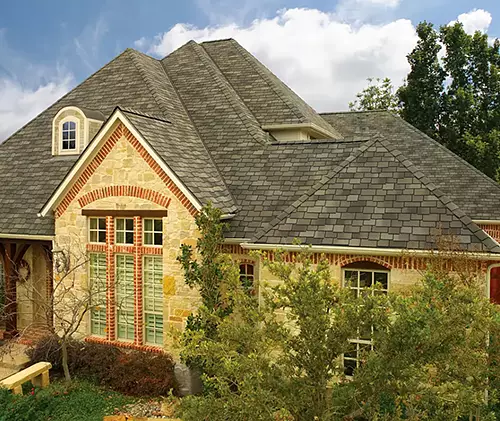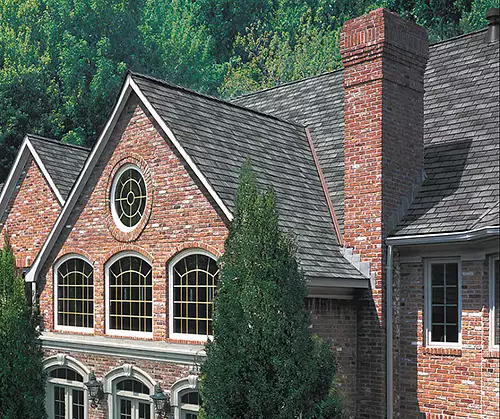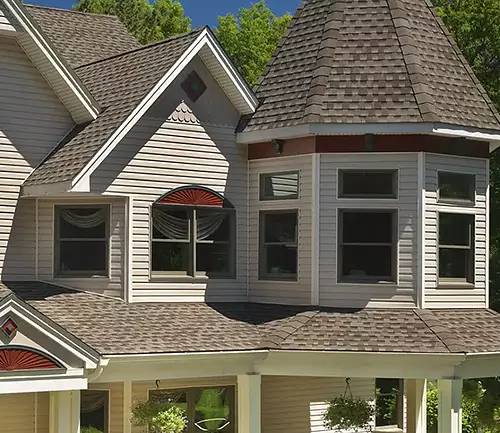.png)
.png)
Search By Square Foot
• Up to 1000 Sq Ft
• 1001 - 1500 Sq Ft
• 1501 - 2000 Sq Ft
• 2001 - 2500 Sq Ft
• 2501 - 3000 Sq Ft
• 3001 - 3500 Sq Ft
• 3501 - 4000 Sq Ft
• 4001 - 4500 Sq Ft
• 4501 - 5000 Sq Ft
• 5001 Sq Ft And Up
Search By Square Foot
• Up to 1000 Sq Ft
• 1001 - 1500 Sq Ft
• 1501 - 2000 Sq Ft
• 2001 - 2500 Sq Ft
• 2501 - 3000 Sq Ft
• 3001 - 3500 Sq Ft
• 3501 - 4000 Sq Ft
• 4001 - 4500 Sq Ft
• 4501 - 5000 Sq Ft
• 5001 Sq Ft And Up
The roof makes up a lot of visual real estate on most home styles, so it’s important to select roofing that complements your house and enhances curb appeal as a whole. Do you know which roof color will bring out the best in your home? Here are some things to keep in mind to ensure you build a beautiful property with a picture-perfect façade from the top down!

Complement the Exterior Scheme
Always take a step back when you start designing. It’s easy to get hyper-focused on individual elements or small sections of a large project, but you need to consider the whole if you want to create a balanced look overall. This is important for every part of the house, but especially the exterior because it will always be viewed in its entirety from the street.
Selecting a roof isn’t an exact science when it comes to color. You might have heard that a contrasting color is best—but pairing green siding with red roofing might be a little too much unless the colors are subdued. Staying in the same color family is a safe choice, then—but make sure there’s enough difference that the roof looks distinct from the rest of the exterior. The best roof color in any case could change if you adjust the color of your siding and/or trim, which is why it’s a good idea to commit to all your choices at the same time.
Still need some inspiration? Here are some popular combinations to consider. 
Cool exterior schemes – Of the cool tones, blue is the most popular house color by far, but you’ll also see representatives in green and sometimes purple. Bluish and true gray roofs look lovely on most blue homes—especially if you pair a light gray roof with deep blue siding or a deeper gray roof with light blue siding. Cool-toned gray also looks great atop other cool schemes!
Warm exterior schemes – Whether you’re looking at bold shades of yellow or red, or more subdued tans and browns, you’ll find plenty of complementary roof options. Many yellow and red homes opt for neutral gray or even black roofs, while tan and brown homes tend to stick to roof colors similar to the siding. There are also plenty of yellow-tan homes with red roofs—we’ve seen that combination on Mediterranean designs and farmhouses alike.
Neutral exterior schemes – If you’re working with a neutral scheme, you can choose to keep it simple or go bold. For example, a roof of any color will look good on a white house, but you’ll create totally different impressions if you go with brown, gray, black, or even red. If you’re working with grayscale, it’s easy to go lighter or darker with the roof with success. Luckily, there are tons of neutral roofing color options on the market, so you can define your house from others exactly the way you want.
Color theory isn’t the only thing to take into account—in fact, it might be easier to come to a roofing decision based on other criteria. Read on to learn about those!

Consider Historical Background
There’s a reason why we think certain homes look best certain ways, and that’s due to history. So many examples of our favorite architectural styles were built before our lifetimes, and the materials of the time and place have been associated with them as a result. That’s why we love the look of slate roofs on grand colonial and traditional homes, and why wood shingles are preferred for farmhouses and cottages. Those natural materials came in limited colors, of course, and there were also regional nuances in most areas based on the local trees and quarries.
So, what kind of house are you building? Do some research and see what kind of roofing was used in examples of the past, then find a modern product that can mimic the look with greater durability. For instance, a Cape Cod house will look great with the look of weathered cedar shakes, and you’d probably want a slate look with a range of hues for a Victorian. Even if you don’t necessarily want the look of any particular material, finding a similar color on any type of roofing will give you beautiful results. Taking the time to research similar homes of the past can really pay off—you may even find a whole exterior color palette you’d like to recreate while you’re at it!

Don’t Forget Your Surroundings
Your house won’t exist in a bubble, so give some thought to its background. What kind of landscape do you have, if you’re building on acreage? If you’re in a neighborhood, what do the other houses look like? Variety is the spice of life and nobody wants to see cookie cutter clones up and down the street, but try to fit in to some extent. Otherwise, you run the risk of your house standing out like a sore thumb.
For example, a black roof can look great in many places, but it’s not a good choice for desert areas surrounded by brown and sandy tones. If all of your neighbors have gray roofs, you have to carefully consider how saturated you can go with any other hue—a steely slate blue or sandy brown should work, but a rusty red might draw attention for the wrong reasons. Feel free to take inspiration from your surroundings and select a roof color that reflects aspects of the environment or ask the neighbors what they used. Once you have a starting point, it’ll be a lot easier to find what you’re looking for.
When it comes time to choose a roof, take a look at what GAF has to offer. Their products are preferred by builders and homeowners alike because they check all the boxes when it comes to performance and aesthetics. GAF® also makes selection easy with a virtual remodeler tool that allows you to test different roofs out on dozens of model homes in a variety of styles, or you can upload an image of your own house to work with. Swap colors for the walls, trim, and doors and try on different roofing products—this nifty tool can help you find a beautiful scheme in no time!